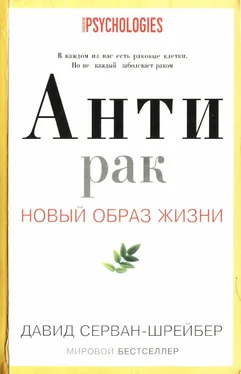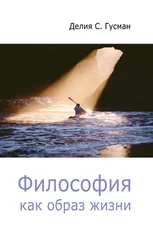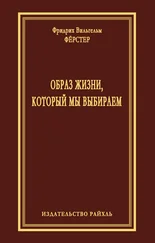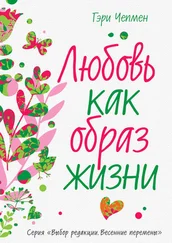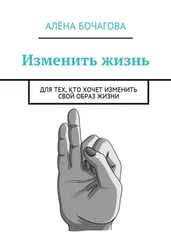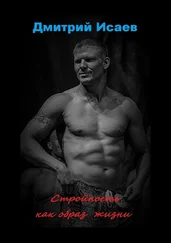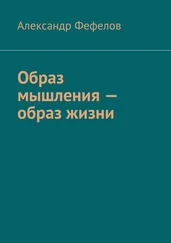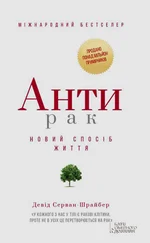Давид Серван-Шрейбер - Антирак. Новый образ жизни
Здесь есть возможность читать онлайн «Давид Серван-Шрейбер - Антирак. Новый образ жизни» — ознакомительный отрывок электронной книги совершенно бесплатно, а после прочтения отрывка купить полную версию. В некоторых случаях можно слушать аудио, скачать через торрент в формате fb2 и присутствует краткое содержание. Город: Москва, Год выпуска: 2010, ISBN: 2010, Издательство: РИПОЛ классик, Жанр: sci_medicine_alternative, Психология, на русском языке. Описание произведения, (предисловие) а так же отзывы посетителей доступны на портале библиотеки ЛибКат.
- Название:Антирак. Новый образ жизни
- Автор:
- Издательство:РИПОЛ классик
- Жанр:
- Год:2010
- Город:Москва
- ISBN:978-5-386-02111-5
- Рейтинг книги:4.26 / 5. Голосов: 34
-
Избранное:Добавить в избранное
- Отзывы:
-
Ваша оценка:
- 80
- 1
- 2
- 3
- 4
- 5
Антирак. Новый образ жизни: краткое содержание, описание и аннотация
Предлагаем к чтению аннотацию, описание, краткое содержание или предисловие (зависит от того, что написал сам автор книги «Антирак. Новый образ жизни»). Если вы не нашли необходимую информацию о книге — напишите в комментариях, мы постараемся отыскать её.
Антирак. Новый образ жизни — читать онлайн ознакомительный отрывок
Ниже представлен текст книги, разбитый по страницам. Система сохранения места последней прочитанной страницы, позволяет с удобством читать онлайн бесплатно книгу «Антирак. Новый образ жизни», без необходимости каждый раз заново искать на чём Вы остановились. Поставьте закладку, и сможете в любой момент перейти на страницу, на которой закончили чтение.
Интервал:
Закладка:
20. Sofi, F., “Adherence to Mediterranean Diet and Health Status: Meta-Analysis,” British Medical Journal (2008).
21. Owen, R. W., Haubner, R., Wurtele, G., Hull, E., Spiegelhalder, B., Bartsch, H., “Olives and Olive Oil in Cancer Prevention,” European Journal of Cancer Prevention 13 (2004): 319-26.
22. Martin-Moreno, J. M., et al., “Dietary Fat, Olive Oil Intake and Breast Cancer Risk,” International Journal of Cancer 58, no. 6 (1994): 774-80.
23. Stoneham, M., et al., “Olive Oil, Diet and Colorectal Cancer: An Ecological Study and a Hypothesis,” Journal of Epidemiology & Community Health 54, no. 10 (2000): 756-60.
24. Lipworth, L., et al., “Olive Oil and Human Cancer: An Assessment of the Evidence,” Preventive Medicine 26, no. 2 (1997): 181-90.
25. Menendez, J. A., et al., “Oleic Acid, the Main Monounsaturated Fatty Acid of Olive Oil, Suppresses Her-2/neu (erbB-2) Expression and Synergistically Enhances the Growth Inhibitory Effects of Trastuzumab (Herceptin) in Breast Cancer Cells with Her-2/neu Oncogene Amplification,” Annals of Oncology 16, no. 3 (2005): 359-71.
26. Menendez, J. A., et al., “Analyzing Effects of Extra-Virgin Olive Oil Polyphenols on Breast Cancer-Associated Fatty Acid Synthase Protein Expression Using Reverse-Phase Protein Microarrays,” International Journal of Molecular Medicine 22, no. 4 (2008): 433-39.
27. Wu, A. H., M. C. Pike, and D. O. Stram, “Meta-analysis: Dietary Fat Intake, Serum Estrogen Levels, and the Risk of Breast Cancer,” Journal of the National Cancer Institute 91 (1999): 529-34.
28. Ravdin, P. M., K. A. Cronin, N. Howlader, et al., “The Decrease in Breast-Cancer Incidence in 2003 in the United States,” New England Journal of Medicine 356, no. 16 (2007): 1670-74.
29. Agence Française de Sécurité Sanitaire des Aliments, Sécurité et bénéfices des phyto-estrogènes apportés par l’alimentation, Agence Française de Sécurité Sanitaire des Aliments, 2005, Saisine no. 2002-SA-231.
30. Aggarwal, B. B., H. Ichikawa, P. Garodia, et al., “From Traditional Ayurvedic Medicine to Modern Medicine: Identification of Therapeutic Targets for Suppression of Inflammation and Cancer,” Expert Opinion on Therapeutic Targets 10, no. 1 (2006): 87-118.
31. Ferlay, J., F. Bray, P. Piesci, et al., eds., WHO International Agency for Research on Cancer (IARC), IARC Cancer Epidemiology Database, Globocan 2000, Cancer Incidence, Mortality and Prevalence Worldwide (Lyon, France: IARC Press, 2000).
32. Institute for Scientific Information, isihighlycited.com, 2005.
33. Shishodia, S., and B. B. Aggarwal, “Nuclear Factor-kappaB Activation: A Question of Life or Death,” Journal of Biochemistry & Molecular Biology 35, no. 1 (2002): 28-40.
34. Mehta, K., P. Pantazis, T. McQueen, et al., “Antiproliferative Effect of Curcumin (Diferuloylmethane) Against Human Breast Tumor Cell Lines,” Anti-Cancer Drugs 8, no. 5 (1997): 470-81.
35. Aggarwal, B. B., S. Shishodia, Y. Takada, et al., “Curcumin Suppresses the Paclitaxel-Induced Nuclear Factor-kappaB Pathway in Breast Cancer Cells and Inhibits Lung Metastasis of Human Breast Cancer in Nude Mice,” Clinical Cancer Research 11, no. 20 (2005): 7490-98.
36. Carter, A., “Curry Compound Fights Cancer in the Clinic,” Journal of the National Cancer Institute (2008). p. djn141.
37. Cheng, A. L., C. H. Hsu, J. K. Lin, et al., “Phase I Clinical Trial of Curcumin, a Chemopreventive Agent, in Patients with High-Risk or Pre-malignant Lesions ,” Anticancer Research 21, no. 4B (2001): 2895-900.
38. Shoba, G., D. Joy, T. Joseph, et al., “Influence of Piperine on the Pharmacokinet ics of Curcumin in Animals and Human Volunteers,” Planta Medica 64, no. 4 (1998): 353-56.
39. Gao, X., D. Deeb, H. Jiang, et al., “Curcumin Differentially Sensitizes Malignant Glioma Cells to TRAIL/Apo2L-Mediated Apoptosis Through Activation of Pro caspases and Release of Cytochrome c from Mitochondria,” Journal of Experimental Therapeutics & Oncology 5, no. 1 (2005): 39-48.
40. Ooi, V. E., and F. Liu, “Immunomodulation and Anti-Cancer Activity of Polysaccharide-Protein Complexes,” Current Medicinal Chemistry 7, no. 7 (2000): 715-29.
41. Torisu, M., Y. Tayashi, T. Ishimitsu, et al., “Significant Prolongation of Disease-Free Period Gained by Oral Polysaccharide K (PSK) Administration After Curative Surgical Operation of Colorectal Cancer,” Cancer Immunology Immunotherapy 31 (1999): 261-68.
42. Nakazato, H., A. Koike, S. Saji, et al., “Efficacy of Immunochemotherapy as Adjuvant Treatment After Curative Resection of Gastric Cancer,” Lancet 343 (1994): 1122-26.
43. Hara, M., T. Hanaoka, M. Kobayashi, et al., “Cruciferous Vegetables, Mushrooms, and Gastrointestinal Cancer Risks in a Multicenter, Hospital-Based Case-Control Study in Japan,” Nutrition and Cancer 46, no. 2 (2003): 138-47.
44. Torisu, Tayashi, Ishimitsu, et al., “Significant Prolongation of Disease-Free Period . . . ”
45. Kikuchi, Y., I. Kizawa, K. Oomori, et al., “Effects of PSK on Interleukin-2 Production by Peripheral Lymphocytes of Patients with Advanced Ovarian Carcinoma During Chemotherapy,” Japanese Journal of Cancer Research 79, no. 1 (1988): 125-30.
46. Tsujitani, S., Y. Kakeji, H. Orita, et al., “Postoperative Adjuvant Immunochemotherapy and Infiltration of Dendritic Cells for Patients with Advanced Gastric Cancer,” Anticancer Research 12, no. 3 (1992): 645-48.
47. Kariya, Y., N. Inoue, T. Kihara, et al., “Activation of Human Natural Killer Cells by the Protein-Bound Polysaccharide PSK Independently of Interferon and Interleukin 2,” Immunology Letters 31, no. 3 (1992): 241-45.
48. Mizutani, Y., and O. Yoshida, “Activation by the Protein-Bound Polysaccharide PSK (Krestin) of Cytotoxic Lymphocytes That Act on Fresh Autologous Tumor Cells and T24 Human Urinary Bladder Transitional Carcinoma Cell Line in Patients with Urinary Bladder Cancer,” Journal of Urology 145, no. 5 (1991): 1082-87.
49. Torisu, Tayashi, Ishimitsu, et al., “Significant Prolongation of Disease-Free Period . . .”
50. Labrecque, L., S. Lamy, A. Chapus, et al., “Combined Inhibition of PDGF and VEGF Receptors by Ellagic Acid, a Dietary-Derived Phenolic Compound,” Carcinogenesis 26, no. 4 (2005): 821-26.
51. Ibid.
52. Hanausek, M., Z. Walaszek, and T. J. Slaga, “Detoxifying Cancer Causing Agents to Prevent Cancer,” Integrative Cancer Therapies 2, no. 2 (2003): 139-44.
53. Seeram, N., L. Adams, Y. Zhang, et al., “Blackberry, Black Raspberry, Blueberry, Cranberry, Red Raspberry, and Strawberry Extracts Inhibit Growth and Stimulate Apoptosis of Human Cancer Cells in Vitro,” Journal of Agricultural and Food Chemistry 54 (2006): 9329-39.
54. Béliveau, R., and D. Gingras, Les aliments contre le cancer.
55. Stoner, G. D., et al., “Cancer Prevention with Freeze-Dried Berries and Berry Components,” Seminars in Cancer Biology 17, no. 5 (2007): 403-10.
56. Stoner, G. D., “Commentary—Foodstuffs for Preventing Cancer: The Preclinical and Clinical Development of Berries,” Cancer Prevention Research 187 (2009). DOI: doi: 10.1158/1940-6207.CAPR-08-0226.
57. Vizzotto, M., “Inhibition of Invasive Breast Cancer Cells by Selected Peach and Plum Phenolic Antioxidants” (PhD diss., Texas A&M University, August 2005).
58. Altman, L. K., “New Drug Fights Second Kind of Cancer,” New York Times , May 14, 2001.
59. Folkman J., and R. Kalluri, “Cancer Without Disease,” Nature 427, no. 6977 (2004): 787.
Читать дальшеИнтервал:
Закладка:
Похожие книги на «Антирак. Новый образ жизни»
Представляем Вашему вниманию похожие книги на «Антирак. Новый образ жизни» списком для выбора. Мы отобрали схожую по названию и смыслу литературу в надежде предоставить читателям больше вариантов отыскать новые, интересные, ещё непрочитанные произведения.
Обсуждение, отзывы о книге «Антирак. Новый образ жизни» и просто собственные мнения читателей. Оставьте ваши комментарии, напишите, что Вы думаете о произведении, его смысле или главных героях. Укажите что конкретно понравилось, а что нет, и почему Вы так считаете.
